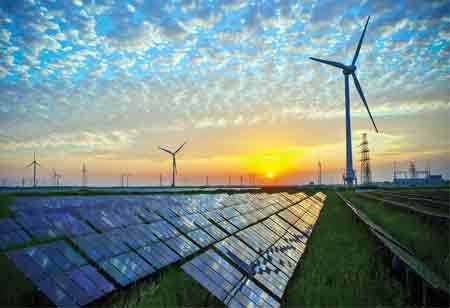Thank you for Subscribing to Energy Business Review Weekly Brief
How Solar PV Power Plant Works
Photovoltaic power plants use large expanses of photovoltaic cells, often known as PV or solar cells, to convert sunlight into useable electricity.

By
Energy Business Review | Saturday, November 27, 2021
Stay ahead of the industry with exclusive feature stories on the top companies, expert insights and the latest news delivered straight to your inbox. Subscribe today.
Thin-film Solar panels can be used as flexible films to cover existing surfaces or as part of building materials like roofing tiles.
Fremont, CA: Photovoltaic power plants use large expanses of photovoltaic cells, often known as PV or solar cells, to convert sunlight into useable electricity. These cells are commonly made of silicon alloys and are the most widely used technology; some people may even have one on their roofs.
The panels themselves come in a number of different forms, including:
Crystalline Solar Panels: As the name implies, these panels are constructed of crystalline silicon. In nature, they could be monocrystalline or polycrystalline. Monocrystalline versions are usually more efficient (about 20 percent or higher) but more expensive than its alternatives (usually 15-17 percent); nevertheless, the gap between them rapidly closes as technology progresses.
Check Out This: Semiconductor Manufacturing
Thin-Film Solar Panels: These panels are made of a sequence of thin sheets that absorb light from several sections of the electromagnetic spectrum. The most prevalent materials used are Amorphous silicon (a-Si), cadmium telluride (CdTe), cadmium sulfide (CdS), and copper indium (gallium) diselenide. This type of panel is well fitted for use as flexible films over already available surfaces or as part of building materials such as roofing tiles.
This type of solar panels produce electricity, which is typically sent straight into the national grid or stored in batteries.
Working of a Solar PV Power Plant
Solar PV power plants work how small-scale PV panels do at home. The majority of solar PV panels are made of semiconductor materials, most commonly silicon. When photons from the sun hit a semiconductor material, free electrons are created, which can flow within the substance to generate an electrical current. The photoelectric effect is the name for this phenomenon. Before it can be quickly consumed or fed into the electrical grid, the DC current must first be transformed to Alternating Current (AC) using an inverter.
PV panels are different from other solar power plants as they directly use the photoelectric effect, almost diminishing the need for any additional process or device. Unlike solar thermal plants, they do not require a liquid heat-carrying medium like water. PV panels do not concentrate energy; instead, they transform photons into electricity, which is subsequently sent to another location.
See Also : Semiconductor Review






